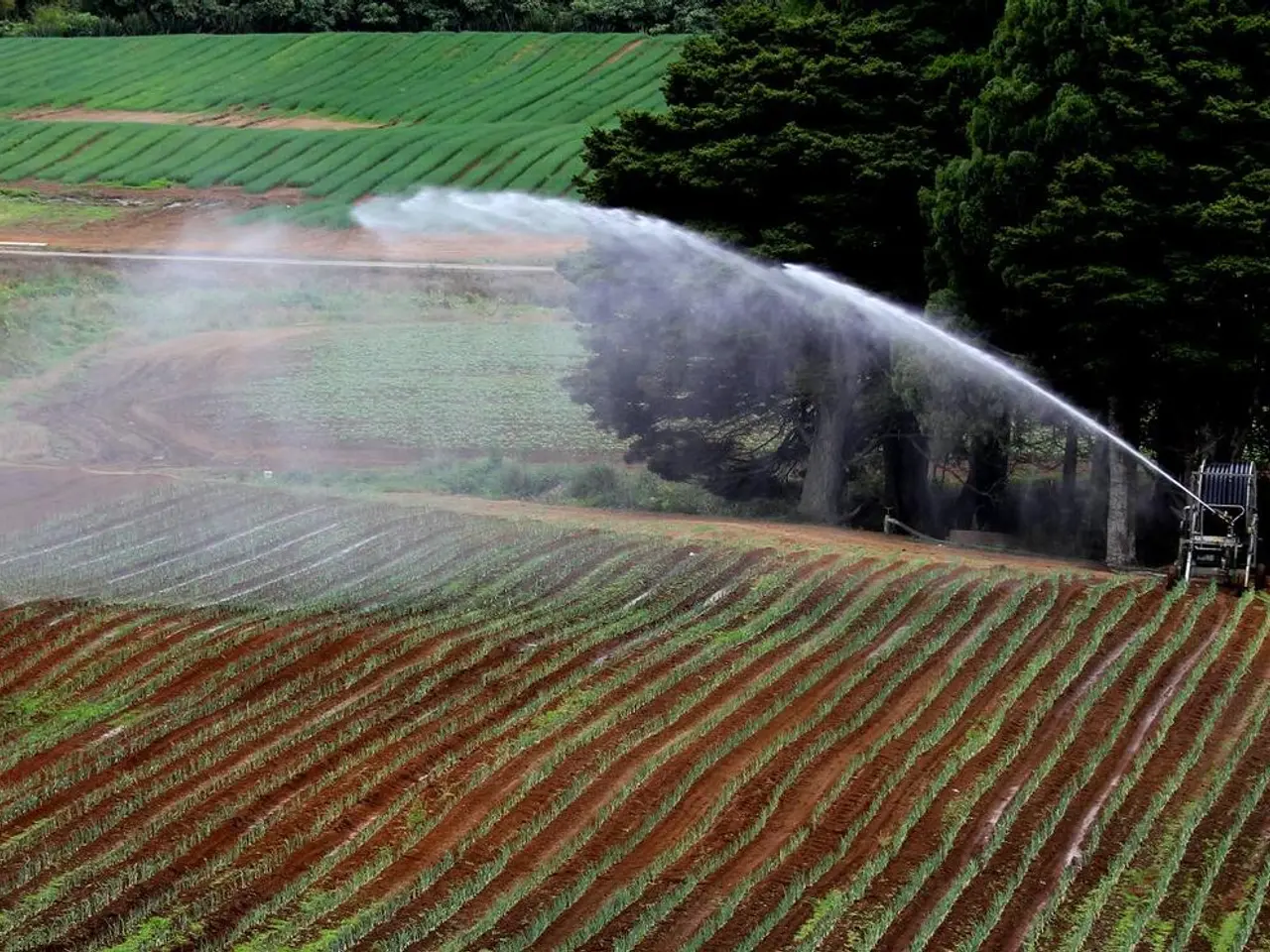Benefits and Drawbacks of Soil-less Cultivation: Extensive Analysis in Full
In the realm of modern agriculture, hydroponic farming has emerged as a promising solution, offering numerous environmental benefits while presenting some unique challenges.
Hydroponics, a method of growing plants without soil, is renowned for its water conservation efforts. By recycling nutrient solutions and minimizing evaporation and runoff, hydroponics can save up to 80-90% water compared to traditional soil-based farming [1][2][3]. However, the energy-intensive nature of hydroponics, particularly in indoor or greenhouse settings, can increase its carbon footprint if non-renewable energy sources are used.
One significant advantage of hydroponics is its land use efficiency. By not relying on soil, hydroponics avoids soil degradation, erosion, and nutrient depletion common in conventional agriculture [1][2]. This means no contribution to soil degradation or loss of soil biodiversity, a long-term advantage.
The reduced need for pesticides and fertilizers in hydroponic systems also contributes to less environmental pollution [1][4]. Traditional farming often relies heavily on these chemicals, which can degrade ecosystems and water quality over time.
However, hydroponics is not without its trade-offs. The closed system in which plants grow can allow diseases to spread more quickly. Regular cleaning, water quality control, and nutrient solution checks are necessary to maintain crop health and prevent nutrient imbalances that can lead to slow growth or disease [5].
Hydroponics accelerates plant growth by directly delivering nutrients to the plants, leading to higher yields and earlier harvests. Plants in hydroponics can thrive in various substrates like perlite, coconut coir, or gravel. Fruits like strawberries and vegetables like lettuce, tomatoes, and herbs are commonly grown hydroponically.
The controlled environments of hydroponics typically result in fewer pests and diseases, reducing the need for pesticides. However, hydroponic systems can be sensitive to power outages, which can harm crops.
Hydroponic systems can be set up in small greenhouses, on rooftops, or in warehouses for urban farming, making it a space-efficient solution, particularly in cities where land is limited. This urban farming approach allows for vertical farming, further increasing efficiency.
In conclusion, hydroponic farming offers major environmental benefits in water conservation, land use efficiency, reduced pollution, and climate resilience. However, its long-term impact depends on managing energy consumption and integrating renewable energy sources. Traditional farming supports biodiversity and soil health but tends to have greater water use, soil degradation, and pollution risks over time [1][2][3][4]. The choice between them involves balancing these factors depending on local conditions and sustainability goals.
[1] FAO (2015) Hydroponics and Aeroponics: A Review of the Current State of Knowledge and Future Perspectives. Available at: http://www.fao.org/3/a-i4888e.pdf [2] Barrett, J. (2016) Hydroponics: The Sustainable Way to Farm in the Future? Available at: https://www.theguardian.com/sustainable-business/2016/mar/08/hydroponics-the-sustainable-way-to-farm-in-the-future [3] US Environmental Protection Agency (2018) Hydroponics and Aquaponics. Available at: https://www.epa.gov/agriculture/hydroponics-and-aquaponics [4] National Centre for Biotechnology Information (2014) Hydroponics: A Review. Available at: https://www.ncbi.nlm.nih.gov/pmc/articles/PMC4021485/ [5] National Aeronautics and Space Administration (2018) Hydroponics. Available at: https://www.nasa.gov/feature/hydroponics-a-space-saving-solution-for-food-production
- Science and technology have played a pivotal role in the development of hydroponic farming, as it allows plants to be grown without soil, using nutrient solutions and controlled environments, leading to higher yields and water conservation.
- Vertical farming, a space-efficient solution particularly in urban areas, can be effectively implemented with hydroponic systems, as they are designed to optimize land use, thereby fostering health-and-wellness by providing locally grown produce.
- Integrating renewable energy sources in hydroponic systems can help mitigate its carbon footprint due to its energy-intensive nature, while continuously emphasizing the importance of science, nutrition, fitness-and-exercise, and overall health in our modern world.




